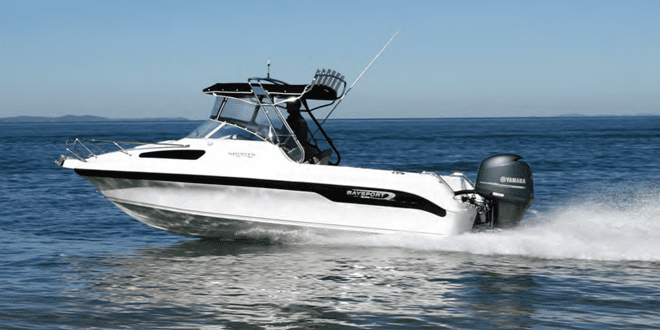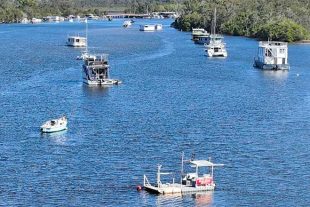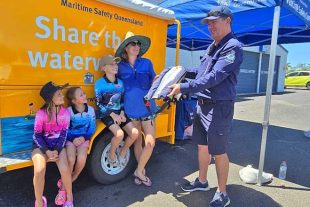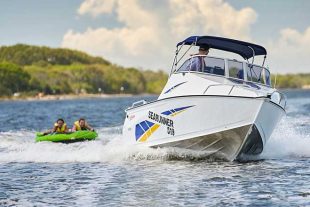THE Baysport Sports 640 (Fisherman) is a boat I have previously tested and the review can be found on the BNB website here: Baysport 640 Fisherman
However, there have been some subtle changes that I wanted to check out and give you some information about.
At first glance the test boat displayed the obvious upgrade of the optional stainless steel targa.
This gives you a full stainless steel structure, providing a more secure place to store your rods and something solid to grab onto, which is always handy.
While the upgrade does come with a price tag of $3600, it is something worth considering if you plan on keeping the boat for a while.
Not only is it extra solid, it finishes off the boat and creates a more stylish and sleek look.
The rocket launcher section is also stronger, which is definitely an added bonus when you have it full of offshore combos.
It doesn’t take long to rack up a few dollars in rods and reels, and you want to know they are safe and sound up there, yet within easy reach.
The stainless steel targa also has an inbuilt slide-out awning that provides more shelter from the elements.
Even though this model is branded as the Fisherman, I still think it doubles as a good family all-rounder.
There is a fold-away bench seat at the back that would easily accommodate a kid or two and the cabin is large enough for children to play in while the boat is at rest or anchored up.
An Esky-accommodating passenger seat was another optional upgrade the test boat was fitted with.
It is essentially a stainless structure that holds a standard bucket seat, but has been designed to fit an Esky underneath, which is held in place by a strap.
It is not a new idea, but I do think it’s a good one.
I’m not a big fan of having an Esky floating around the back of the boat because that’s my fishing area.
Anything that can be done to keep that space free from obstacles and clutter is a bonus.
The inside lining of the boat now has a flow-coat finish in what is probably more a cosmetic change than anything else, though it may reduce noise a little.
From an aesthetic point of view it looks heaps better than before and improves the overall feel and quality of the build.
Another bonus is that it should be easier to clean and keep clean.
The final main difference between this test boat and the previous one is the engine.
In my previous article I mentioned that a 150hp four-stroke Yamaha would be a good option, though I hadn’t had the opportunity to drive that setup.
Well that was rectified with this test.
As expected, the donk performed extremely well.
With three quarters of the 160-litre fuel tank full, two people on board and some safety gear, the rig was fairly potent, easily jumping onto the plane while the boat remained very level.
Ideal cruising speeds were anywhere from 3200 to 3500rpm, with the boat rolling along at 35km/h and 39km/h respectively.
Interestingly enough, overall fuel consumption remained about the same at 2km a litre, which is not bad for a 6m-plus offshore boat with a 150hp engine.
This efficiency is partly due to the concave planing plank that induces lift and reduces the hull’s friction across the water.
It also allows clean water to flow to the motor, ensuring the propeller works as efficiently as possible.
For more information on the range of Baysport Boats, call in and see the crew at Brisbane Yamaha on the Bruce Highway at Burpengary.
Baysport 640 packages start from $52,000 with a two-stroke Yamaha.
As tested with the stainless targa and rocket launchers, 150hp four-stroke Yamaha, Garmin 751 colour chartplotter/sounder, Esky passenger seat and a host of other standard inclusions, the setup came to $63,990.
So if you’re after a good all-rounder, I recommend checking out the Baysport range at the upcoming Brisbane Boat Show and hitting up the guys on the Brisbane Yamaha stand for a hot deal.
However, there have been some subtle changes that I wanted to check out and give you some information about.
At first glance the test boat displayed the obvious upgrade of the optional stainless steel targa.
This gives you a full stainless steel structure, providing a more secure place to store your rods and something solid to grab onto, which is always handy.
While the upgrade does come with a price tag of $3600, it is something worth considering if you plan on keeping the boat for a while.
Not only is it extra solid, it finishes off the boat and creates a more stylish and sleek look.
The rocket launcher section is also stronger, which is definitely an added bonus when you have it full of offshore combos.
It doesn’t take long to rack up a few dollars in rods and reels, and you want to know they are safe and sound up there, yet within easy reach.
The stainless steel targa also has an inbuilt slide-out awning that provides more shelter from the elements.
Even though this model is branded as the Fisherman, I still think it doubles as a good family all-rounder.
There is a fold-away bench seat at the back that would easily accommodate a kid or two and the cabin is large enough for children to play in while the boat is at rest or anchored up.
An Esky-accommodating passenger seat was another optional upgrade the test boat was fitted with.
It is essentially a stainless structure that holds a standard bucket seat, but has been designed to fit an Esky underneath, which is held in place by a strap.
It is not a new idea, but I do think it’s a good one.
I’m not a big fan of having an Esky floating around the back of the boat because that’s my fishing area.
Anything that can be done to keep that space free from obstacles and clutter is a bonus.
The inside lining of the boat now has a flow-coat finish in what is probably more a cosmetic change than anything else, though it may reduce noise a little.
From an aesthetic point of view it looks heaps better than before and improves the overall feel and quality of the build.
Another bonus is that it should be easier to clean and keep clean.
The final main difference between this test boat and the previous one is the engine.
In my previous article I mentioned that a 150hp four-stroke Yamaha would be a good option, though I hadn’t had the opportunity to drive that setup.
Well that was rectified with this test.
As expected, the donk performed extremely well.
With three quarters of the 160-litre fuel tank full, two people on board and some safety gear, the rig was fairly potent, easily jumping onto the plane while the boat remained very level.
Ideal cruising speeds were anywhere from 3200 to 3500rpm, with the boat rolling along at 35km/h and 39km/h respectively.
Interestingly enough, overall fuel consumption remained about the same at 2km a litre, which is not bad for a 6m-plus offshore boat with a 150hp engine.
This efficiency is partly due to the concave planing plank that induces lift and reduces the hull’s friction across the water.
It also allows clean water to flow to the motor, ensuring the propeller works as efficiently as possible.
For more information on the range of Baysport Boats, call in and see the crew at Brisbane Yamaha on the Bruce Highway at Burpengary.
Baysport 640 packages start from $52,000 with a two-stroke Yamaha.
As tested with the stainless targa and rocket launchers, 150hp four-stroke Yamaha, Garmin 751 colour chartplotter/sounder, Esky passenger seat and a host of other standard inclusions, the setup came to $63,990.
So if you’re after a good all-rounder, I recommend checking out the Baysport range at the upcoming Brisbane Boat Show and hitting up the guys on the Brisbane Yamaha stand for a hot deal.
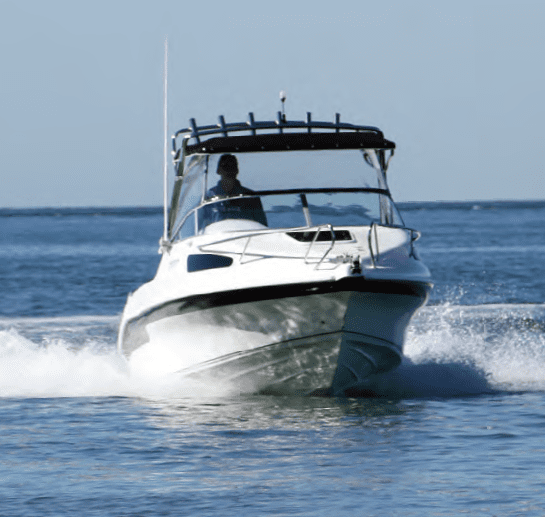
equally adept as an offshore fishing rig.
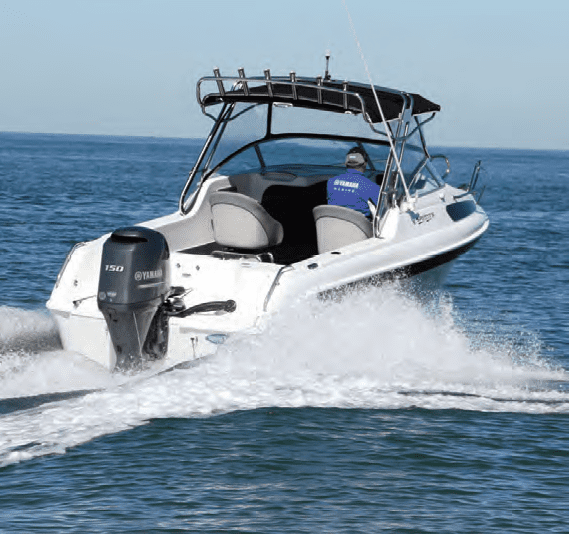
performance and economy.
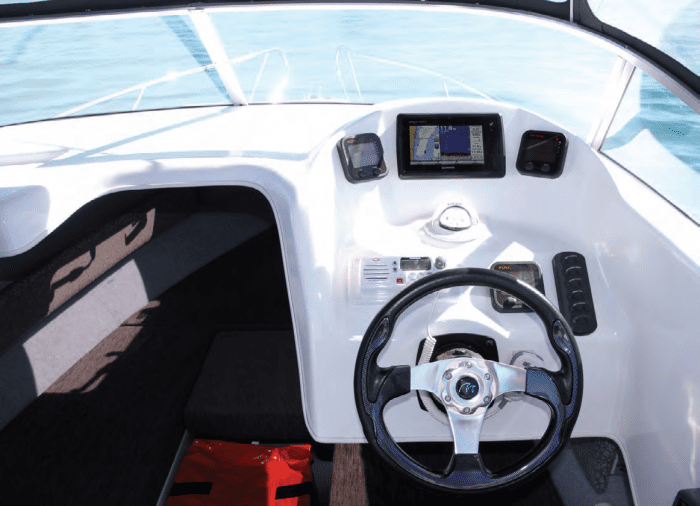
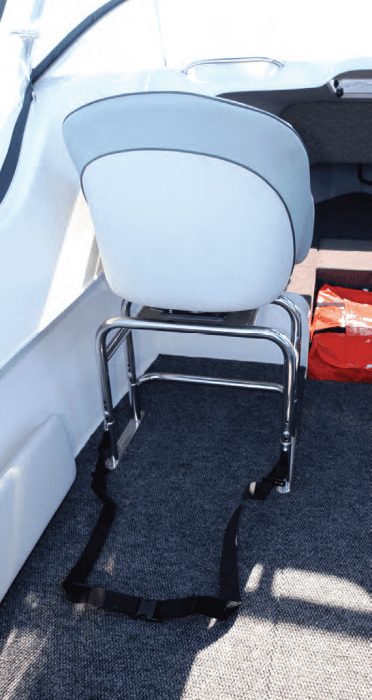
seat.
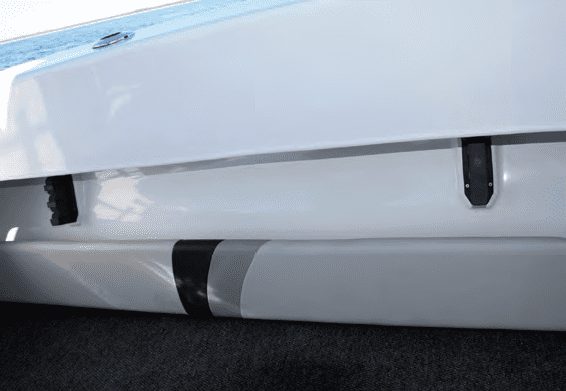
| RPM | KM/H |
|---|---|
| 3200 | 35 |
| 3500 | 39 |
| 4000 | 48 |
| 5000 | 60 |
| 5500 | 67 |
 Bush ‘n Beach Fishing Magazine Location reports & tips for fishing, boating, camping, kayaking, 4WDing in Queensland and Northern NSW
Bush ‘n Beach Fishing Magazine Location reports & tips for fishing, boating, camping, kayaking, 4WDing in Queensland and Northern NSW

